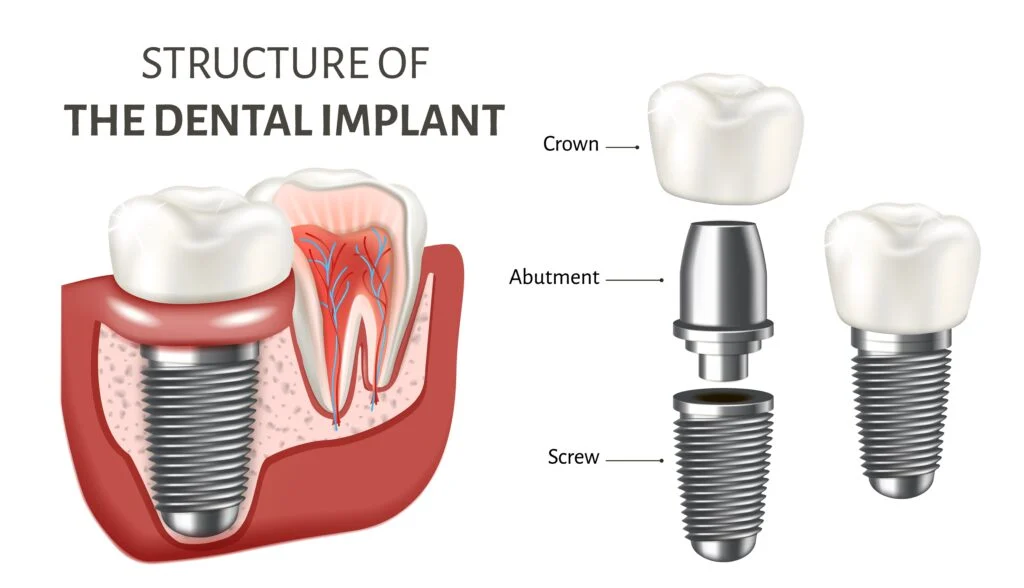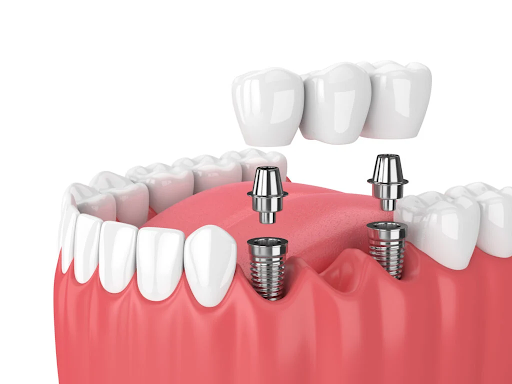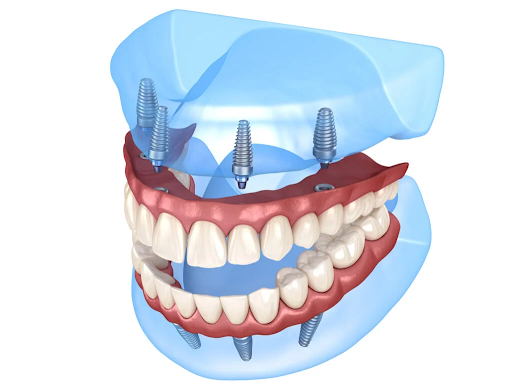What are Dental Implants?
A dental implant is an artificial tooth root surgically implanted into your jawbone. It is a popular tooth replacement option after tooth loss or extraction.
Dental implants have resulted in successful dental restorations for over 30 years.
Dental Implant Structure
The body of a dental implant consists of three pieces that serve different functions:
⇝ The implant (or screw) serves as the tooth’s artificial root.
⇝ The abutment is the connecting post between the implant screw and crown.
⇝ The crown is that rests on top of the abutment. They match the shape and look like your natural teeth.

3 Types of Dental Implants

1. Single Tooth Implant

2. Implant-Supported Bridge

3. All-on-4 Dental Implants
Benefits of Dental Implants
- Allows you to chew and speak normally
- Designed to look like your natural teeth, improving your self-esteem
- Reduces stress on your remaining natural teeth by offering independent support
- Preserves bone, reducing the appearance of aging
- Helps prevent loss of jaw height
- Easy to clean and care for
- With proper care, implants can last between 15 and 25 years
Dental Implant Techniques & Materials
Dental implants come in two different forms, including:
Endosteal Implant
An endosteal implant (root form implant) is the most commonly used today. It is made with titanium, small screws, and alloplastic material, which refers to an artificial tissue graft.
Endosteal implants are surgically inserted into the jawbone. Over time, the implants bond with the natural bone.
Subperiosteal Implant
Subperiosteal implants are extremely rare. However, they are a better option for people with insufficient natural jawbones to support endosteal implants.
A subperiosteal implant is placed under the gums (on or above the jawbone). It is not surgically inserted into the jawbone.
Conclusion
A subperiosteal implant is placed under the gums (on or above the jawbone). It is not surgically inserted into the jawbone.
To know more about how you can maximize your stay with us .
Call us now and Book appointment @ +91 880068158 or visit us at www.oralh.com















